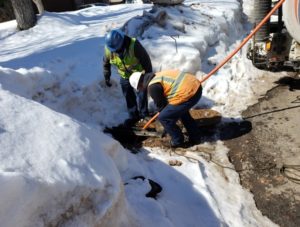 2019-03-19-ProPipe-notes 2019-03-19-ProPipe-notes |
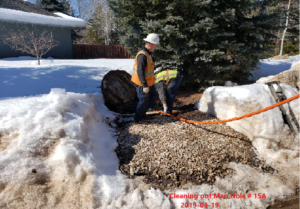 MH 15A off Silver Springs Road MH 15A off Silver Springs Road |
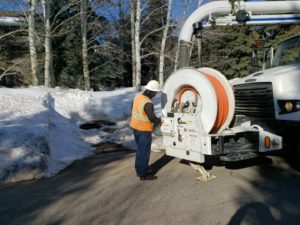 Crew unwinds camera hose Crew unwinds camera hose |
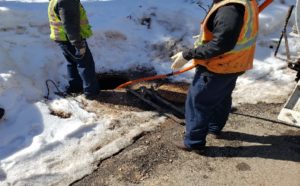 Crew threads hose into tubing Crew threads hose into tubing |
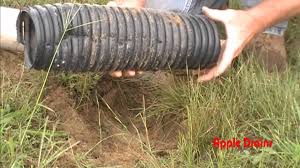 1978 to 2010- 22 year old tubing 1978 to 2010- 22 year old tubing |
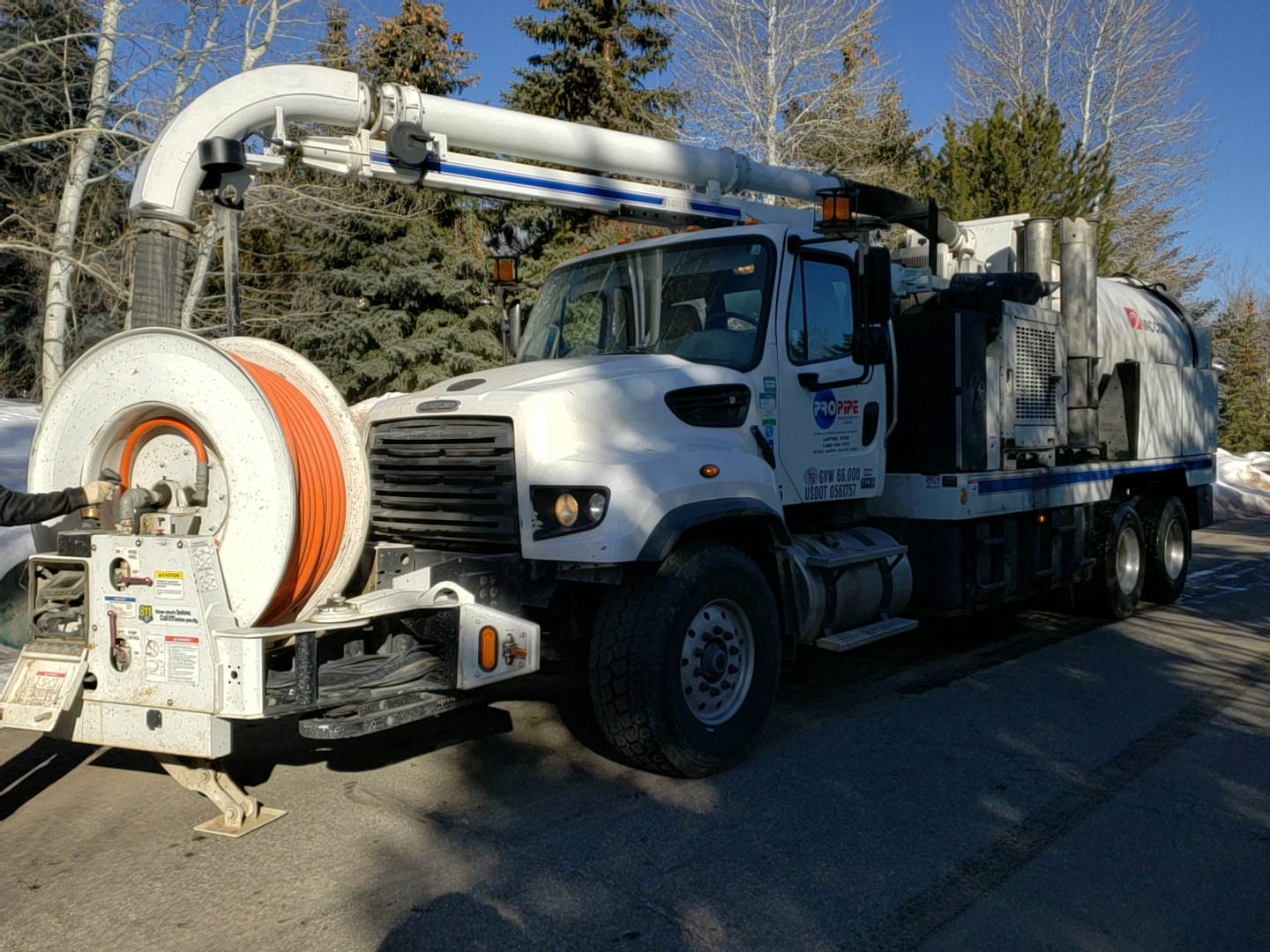 Pump Truck Pump Truck |
04/04/2020 – CV-19 Social Spacing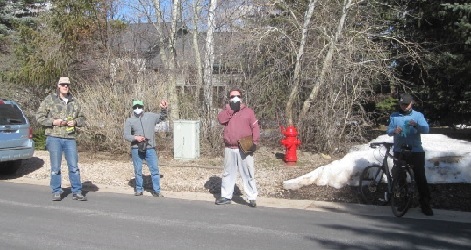 Archer, Williams, Bachman, Paskoski Archer, Williams, Bachman, Paskoski
|
Volunteer checks for blockages
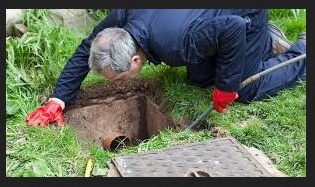
|
- Jetting: This high-pressure pipe cleaning technique blasts water through to eliminate the buildup, scale and blockages that have accumulated over time.
- Mechanical: Pushing or pulling a special device through the pipeline to scrape even the hardest deposits from the pipe’s interior wall. The soft, deteriorating walls of the 40 year old plastic tubes cannot withstanding this method.
- Visual data of the manhole inspection is transmitted digitally to a TV truck for live viewing by the operator; the data can also be transferred to digital media for future use. Cost for one 50′ span is $500.+
|
- Pro-Pipe’s systems inspect mainlines with diameters ranging from 6” to 108” that is a tight squeeze for 40 year old, plastic, corrugated 6″ tubing. The first concern is the size of the equipment vs the diameter of the UD frail tubes.
- Use of two high-resolution digital cameras with distortion-free, wide-angle lenses can optically scan the entire interior of a manhole within 20 seconds.
- Repairs with UV Light Cured-in-Place-Pipe (CIPP) lining process creates a longer-lasting pipe repair using resin-impregnated liners. This advanced technique utilizes fiberglass-reinforced CIPP liners that are pulled in place to create an extremely durable “pipe-within-a-pipe repair.
- Cost is left out of this statement.
|
| Inspections begin by launching a camera from the robotic transporter (or a plumbers snake) within the mainline and up the lateral, extending up to 100 feet. The launching camera has a transmitter that can be tracked on the surface via a sonde (an instrument probe that automatically transmits information about its surroundings underground, under water, in the atmosphere, etc., enabling the location and depth of a lateral line to be marked on the surface. |
If lateral sewer or water line inspections are not performed carefully the crew may be unaware of utility lines that cross over, under, or parallel to the UD tubing. This means utility lines may be mistaken for a dirt or root blockage, leading to potentially dangerous situations if contractors attempt to use augers to clear the pipe. In the case of gas lines, for example, this can cause an explosion. |
 2019-03-19-ProPipe-notes
2019-03-19-ProPipe-notes MH 15A off Silver Springs Road
MH 15A off Silver Springs Road Crew unwinds camera hose
Crew unwinds camera hose Crew threads hose into tubing
Crew threads hose into tubing 1978 to 2010- 22 year old tubing
1978 to 2010- 22 year old tubing Pump Truck
Pump Truck Archer, Williams, Bachman, Paskoski
Archer, Williams, Bachman, Paskoski